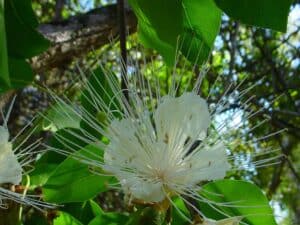Capparis artensis

Unlocking the Secrets of Capparis artensis: A Propagation Guide for Exotic Plant Lovers
Capparis artensis, with its delicate white flowers and intriguing caper-like buds, is a captivating addition to any garden. Native to the Mediterranean region, this evergreen shrub is admired for its ornamental value and culinary uses. However, finding Capparis artensis in nurseries can be quite a challenge. This is where the rewarding yet tricky world of propagation comes in.
While not commonly known for being the easiest plant to propagate, success is achievable with patience, the right techniques, and a dash of green-thumb magic. Here’s a comprehensive guide to help you on your journey to growing Capparis artensis from scratch:
Understanding the Options: Seed vs. Cuttings
-
Seeds: Propagating Capparis artensis from seed requires a bit of patience, as germination can be slow and inconsistent.
- Source: Seeds are usually available from specialized online retailers or by collecting them from mature plants.
- Process: Sow seeds in a well-draining seed-starting mix, keeping them consistently moist but not waterlogged. Providing bottom heat using a seedling mat can significantly speed up germination.
-
Cuttings: Propagating from cuttings offers a faster route to a mature plant and tends to be more successful.
- Source: Take cuttings from healthy, mature plants during the active growing season (spring or early summer).
- Process: Select semi-hardwood cuttings, approximately 4-6 inches long. Remove the lower leaves and dip the cut end in rooting hormone. Plant the cuttings in a well-draining potting mix and maintain a warm, humid environment. A humidity dome or covering the pot with a plastic bag can be helpful.
Essential Tips for Success:
- Well-draining soil: Capparis artensis thrives in well-drained soil, so make sure your potting mix is light and airy.
- Warmth and Sunlight: These plants love sunshine. Provide at least 6 hours of direct sunlight daily. A warm location, ideally between 70-85°F (21-29°C), is ideal for both seed germination and rooting cuttings.
- Patience is Key: Don’t get discouraged if you don’t see results immediately. It can take several weeks or even months for seeds to germinate or cuttings to root.
- Prevent Overwatering: While consistent moisture is crucial, avoid overwatering, which can lead to root rot. Allow the soil to dry slightly between watering.
Beyond Propagation: Caring for your Capparis artensis
Once you’ve successfully propagated your Capparis artensis, proper care is vital for its continued growth and well-being. They prefer a slightly acidic to neutral pH range (6.0-7.0) and require well-draining soil to prevent root rot. While relatively drought-tolerant once established, regular watering during dry periods is essential, especially during the first year.
Reaping the Rewards:
Successfully propagating Capparis artensis is a rewarding experience for plant lovers. Not only will you enjoy the beauty of this unique shrub, but you’ll also be able to harvest its flavorful flower buds, which can be pickled and enjoyed like traditional capers. So, why wait? Embark on your propagation journey today and add this fascinating plant to your collection!